In-Depth Guide to Keto NUTS & SEEDS [Best for FAT Loss]
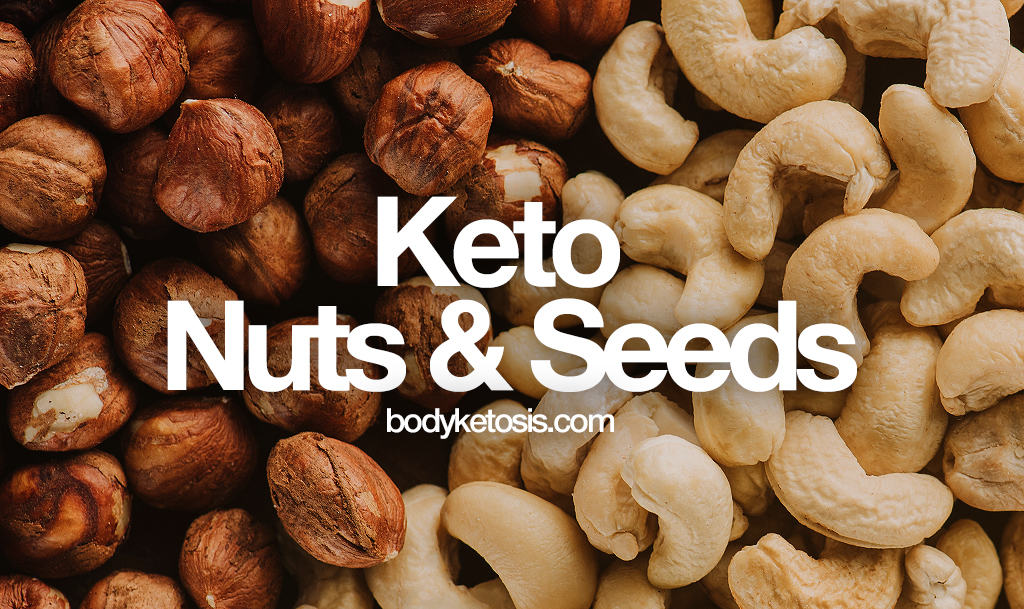
Most nuts and seeds are high in fat, moderate in protein, and low in carbohydrates – the perfect macronutrient ratio for a keto diet.
This is the main reason keto diet guidelines frequently recommend for keto dieters to add nuts and seeds into their meal plans.[1]
However, not all nuts and seeds are keto-friendly.
Some are high in carbohydrates, and others have to be eaten in moderation to prevent adverse outcomes, like kicking yourself out of ketosis.

So, before you start shopping for nuts and seeds to add to your salads, muffins, yogurt, sauces, and fat bombs, you need to learn
- which nuts and seeds are keto friendly,
- which ones you need to avoid, and
- how the good ones can contribute your diet and nutrition.
Let’s dive in.
Are Nuts & Seeds the Same?
You likely noticed that nuts and seeds are frequently mentioned in the same context. There are two main reasons for this.
- First, many nuts and seeds belong to the same botanical category, namely that of seeds. Put simply, all nuts and seeds are, in essence, the seeds of plants.
- Secondly, most nuts and seeds, more often than not, have a similar macronutrient ratio: high in fat, moderate in protein, and low in carbohydrates.
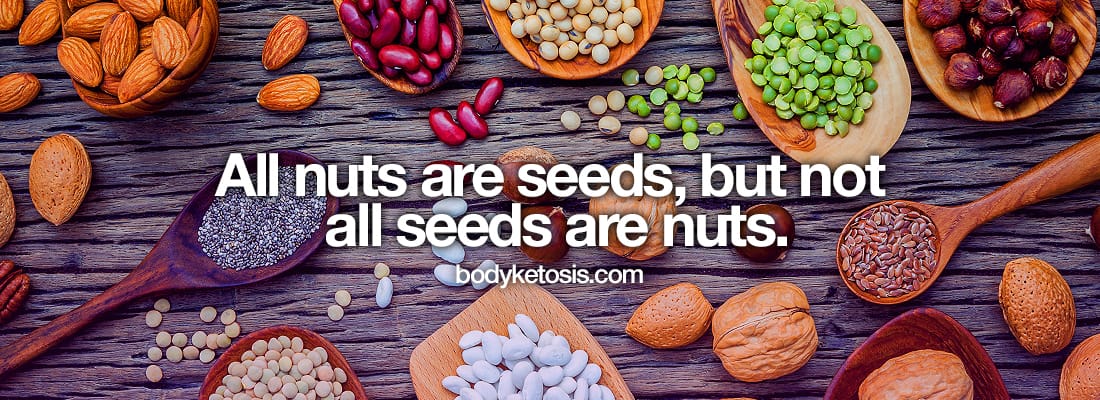
Before we delve into the nutritional value of nuts and seeds, let’s explain what these foods actually are from botanical and culinary standpoints. This type of information is always helpful in understanding the full role and impact of food when it comes to your health and diet.
What are nuts?
Botanically speaking, a nut is a dry fruit with one seed in which the ovary wall (fruits are plant ovaries) becomes hard at maturity.[2]
In nuts, the hard wall (or shell) does not open to discard the seed.
Examples of true botanical nuts include hazelnuts, chestnuts, and acorns. (3)
Culinary speaking, nuts are more loosely defined since they can be any large, oily kernel within a shell.
Many culinary nuts are the botanical seeds of drupes (fruits with a fleshy part surrounding a hard shell with a seed inside). (3)
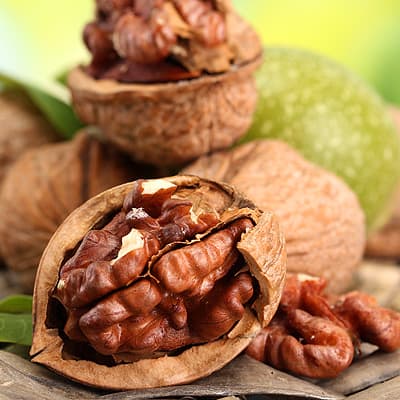
Examples of culinary nuts that are the seeds of drupes include almonds, walnuts, coconuts and pistachios. Some culinary nuts like peanuts and are the seeds of legumes, while others like coconuts are just hard drupes (not seeds). (3)
What are seeds?
Botanically, a seed is the ripened ovule of flowering or non-flowering plants.[4]
A fertilized seed contains a plant embryo that will grow into a new plant under the right conditions.
Examples of botanical seeds that are culinary nuts include peanuts, Brazil nuts, almonds, and cashews. (5)
But from a culinary standpoint, when we talk about seeds, we usually think of sesame, chia, flax, pumpkin, sunflower, mustard and coriander seeds.
As you can see, the definition and classification of nuts and seeds are dependent on who’s defining them.
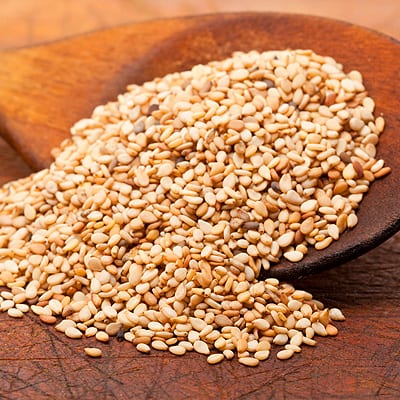
- What you need to know is that all nuts and seeds are essentially the part of a plant from which a new plant can form.
- Most nuts are seeds, but some are called drupes. And what most have in common is that they’re packed with many of the same nutrients.
How it Supports
Weight Loss
Not many foods check all the right nutrition boxes on keto as much as some specific nuts and seeds do. In other words, they’re simply perfect for keto diet.
Here is more on why these foods should have a place in your keto pantry.
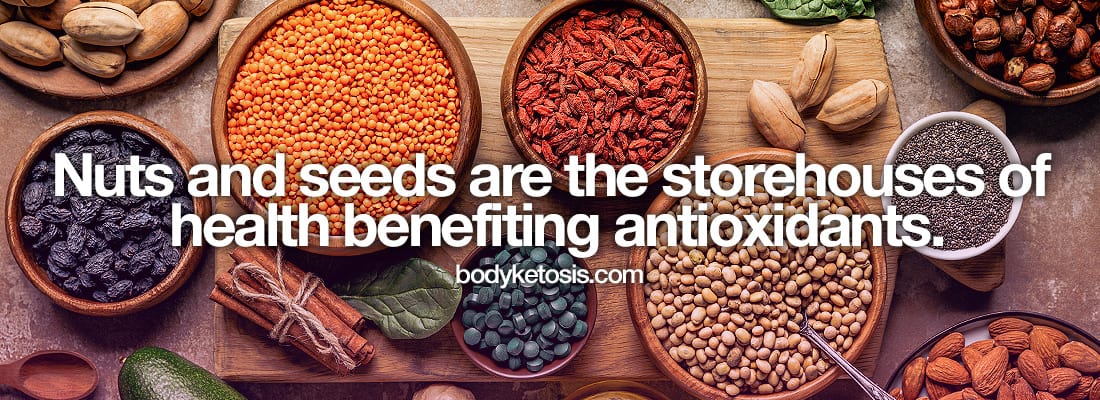
1. High in healthy fat (supports maintaining ketosis)
On a ketogenic diet, most of your calories (65-90%) should come from fat, and nuts and seeds can definitely provide ample amounts of that nutrient.
That’s because many of these foods belong to a food group called oleaginous fruits [6] — oleaginous means oily or containing/producing oil.
What’s even better is that the oil (fat) found in most nuts and seeds is largely made up of the monounsaturated fatty acid (MUFA) kind.
- Research shows that this type of fat reduces your risk of cardiovascular conditions such as atherosclerosis, heart attack, and stroke. (7)
- It also lowers inflammation in your body, which helps with many other chronic conditions. (8)
2. Moderate in protein
Compared to other plant foods, some nuts and seeds definitely have higher amounts of protein.That’s why health agencies like the National Institutes of Health (NIH) place nuts and seeds under the protein food group (9).
This is valuable information for people on plant-based diets, but also for keto dieters who definitely need to eat healthful sources of protein.
But how much and what kind of protein do nuts and seeds have?
- Almond, for example, are 21% protein. On the downside, they are low in some essential amino acids (lysine, methionine, and threonine) and their proteins are difficult to digest. (10)
- Peanuts are 24% protein, and studies show we digest peanut proteins just as well as animal proteins. (11)
3. A good source of fiber (helps to keep you regular)
You can get dietary fiber mainly from carbohydrate-containing foods. This is why getting enough fiber becomes tricky when following strict low-carb diets like keto, but eating nuts and seeds daily definitely helps address this problem.
Two tablespoons of flax seeds, for example, will give you 7.6g of fiber, which is 31% of the daily value for fiber (DV). For reference, women should aim for 25g and men 38g per day of fiber (12). And a cup of chopped pecans will give you 10g of fiber (42% DV) and only 5g of net carbs.
But why exactly do you need fiber?
- First, you need it to maintain a healthy gut microbiota (i.e., a balance of gut bacteria) which ferment fiber to make compounds that provide energy to intestinal cells.
- Secondly, you need fiber to prevent excessive absorption of nutrients, like glucose, which helps lower blood sugar and lipid levels (14).
- Lastly, you need fiber to prevent chronic diseases like diabetes, obesity, heart disease, and cancer, especially colorectal cancers (15).
4. Nutrient Dense (mineral powerhouse)
Nuts and seeds have to be nutrient dense, meaning, having an abundance of different vitamins and minerals. After all, they are the first source of energy for sprouting plants before they develop roots, grow and flourish.
Besides containing energy-providing nutrients (macronutrients like proteins and fats), all seeds also contain other essential nutrients (micronutrients).
Micronutrients found abundantly in nuts and seeds include vitamin E, folate, iron, potassium, magnesium, and selenium, amongst many others.
Of course, the types and levels of micronutrients vary greatly across different types of nuts and seeds. That’s why it’s best to include a variety of different types to get the most out of eating them.
5. Convenient on low-carb diets (perfect snack)
Keto dieters know the importance of convenience when it comes to food. Eating out is really tricky on this diet, and nutritious convenience foods you can store easily and carry anywhere with you are always welcomed.
Nuts and seeds are definitely a great ready-to-eat, on-the-go, and versatile snack.
- First of all, they’re tiny but packed with nutrients. They don’t require any preparation or cooking , and they go well with savory and sweet dishes alike.
- Another great thing is that they also don’t spoil easily. So, stocking up on nuts, seeds, and nut products is definitely a good way to always have a keto-friendly snack on hand. It’s a good idea to carry a little bag with you wherever you go so you always have an option.
Don’t Go Crazy With
Nuts & Seeds
While nuts definitely deserve a special place in your keto meal plan, they shouldn’t be the base of your diet.
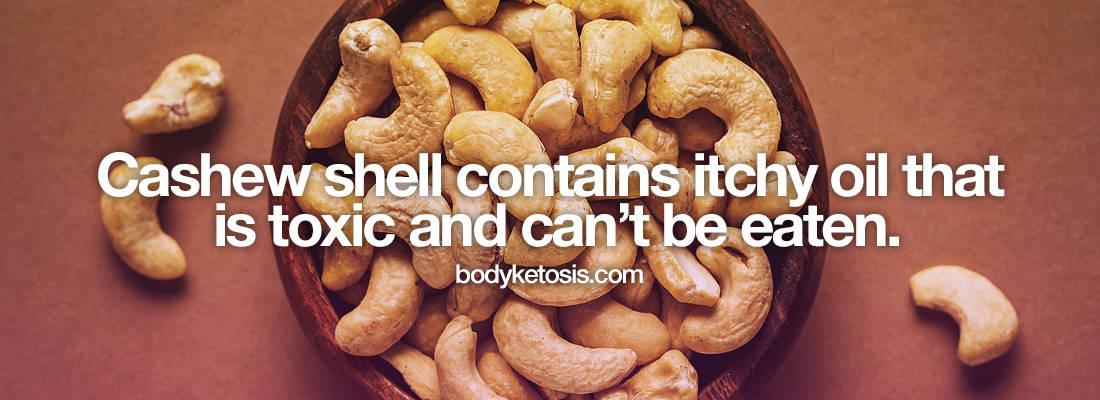
- Firstly, nuts and seeds do contain carbs. A handful of almonds contains almost 3g net carbs, for example. While that may not seem like a lot, the numbers can quickly add up if you’re not careful. And not being careful with nuts and seeds is easy, considering how addictive they can be.
- They are also very rich in protein. For those who are following a higher fat keto diet (~70% fat or more) too much protein can affect your macros. Too much protein can also kick you out of ketosis.
- Another problem with them is their phytic acid content. Phytic acid is an anti-nutrient that impairs the absorption of calcium, magnesium, iron, and zinc. Studies found this compound can cause mineral deficiencies (16). That isn’t to say that nuts are bad for you because they have phytic acid. In small doses, phytic acid actually protects against some cancers since it is also an antioxidant. (17)
The point is, it’s all about finding balance.
Best Tips for “Going Nuts”
on Keto
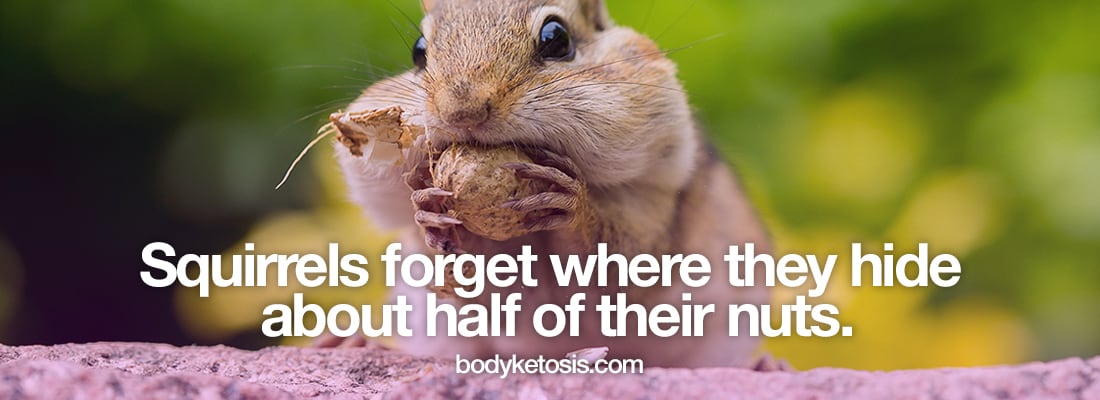
So, how does one actually make nuts a healthful part of a keto diet plan? Below are some handy tips to consider when adding nuts to your daily diet.
1. Don’t be afraid to include daily
Recently, health professionals are hopping on the nuts and seeds bandwagon because of their potent health effects. (17). In fact, large doses (42.5-70g/day) of peanuts are recommended to consume daily in order to receive their health benefits (18).According to a systematic review published in a 2017 issue of Nutrients, eating over three times that amount (100g of almonds) does not promote weight gain and may, in fact, keep you feeling fuller for longer (19).
2. Still, watch your portions
A maximum of 100g of nuts and seeds will be fine on keto. Still, this amount of almonds, for instance, will give you 9.5g net carbs. That’s why portion control when it comes to nuts and seeds is necessary on a keto diet.
A good way to control your serving size is to measure the amount of keto nuts and seeds you plan to eat in a single day and also measure your macros along the way. This way you can plan your portion sizes accordingly.
3. Go for minimally processed
Roasted, salted, and chocolate-coated nuts are not the best choice for keto. Some of these products may contain hidden carbs, and most are easy to overindulge in.
Instead, go for plain nuts and seeds to avoid unnecessary mishaps. The same goes true for nut butters, and seed pastes – plain and sugar-free is always best.
You can read more about keto-friendly nut butters here.
4. Include nut products
Nut flours, nut milks, nut butters, seed paste, seed meal, and other nut-based foods are quite useful on a keto diet. Nuts are also a common source for low-carb flours, like almond flour, which are perfect for cooking during keto.
You can read more about low-carb flours here.
As milk is not allowed on a keto diet, it’s great to use things like macadamia nut milk or coconut milk as substitutes for keto recipes.
Definitely count these products as part of your daily nut consumption. Reading labels definitely helps keep track of your macros when using nut and seed products in meal making.
5. Buy in bulk & store smart
Most products are cheaper when purchased in bulk. It’s also better for the environment and reduces your exposure to chemicals and additives (20). Especially when it’s your go-to keto snack.
The problem with nuts and seeds is that they can have a limited shelf life. Both contain a reasonably high amount of oils, which can go rancid when exposed to heat, light and oxygen – resulting in a bitter taste.
- Store all of your nuts and seeds in airtight containers – takeout containers, mason jars, whatever you have. As long as it can be sealed and shut tight.
- Second step is to keep those babies cold. To keep them fresh for much longer, store containers in the refrigerator, in the freezer, or in a dark cool pantry.
6. Add them to your meals
Nuts and seeds are best eaten with a meal. For example, you can sprinkle sesame seeds over stir-fries and salads, add nut butters to smoothies, make fat bombs with ground walnuts, make basil pesto with pine nuts, and add sunflower seeds to keto breads.
You can basically sprinkle nuts over anything that’s on your plate. Eating nuts and seeds this way helps with portion control but also boosts the nutritional value of each meal.
7. Grind the seeds
Mother nature designed certain seeds to be resistant to digestion so that, when animals eat them, they are propagated in their droppings.
Good examples are flax seeds and sesame seeds, which you cannot digest unless ground. So, if you want to get the most nutrition from them, go for ground flax meal or tahini (sesame paste).
8. Eat a variety
Different nuts and seeds have different nutritional and health benefits. That’s why it’s a good idea to rotate nuts and seeds.
For example, you can add different nuts every morning to your smoothies or keto porridge. You can also buy different seeds each week or eat different seeds for each meal of the day. And remember, variety is the spice of life.
#3 Best Keto Nuts (Approved)
Nuts best for the keto diet are those that are highest in fat and lowest in carbohydrates.
Keto-friendly nuts are also ideally safe to eat in moderate to high amounts, are affordable, versatile, and, of course, tasty.
With all this taken into account, here are some ideal choices to add to your diet.
#1. Pecan
Nutrition per 100g / 3.5 oz / 1 cup
Calories: 691 Total fat: 72.0g Protein: 9.2g
Fiber: 9.6g Net carbs: 4.4g (*)
Pecans are a member of the walnut family of trees, and their nuts are similar to walnuts in appearance.
But despite their uncanny resemblance, a lot of things set them apart. Walnuts are native to Central Asia, while pecans are native to the south-central region of the US and Mexico.
Pecans also differ from walnuts in terms of nutrition, health benefits, taste, and price.
Being 72% fat, pecans are oiler than walnuts. Their high-fat percentage means they are high in calories, providing almost 700 kcal per 100g serving.
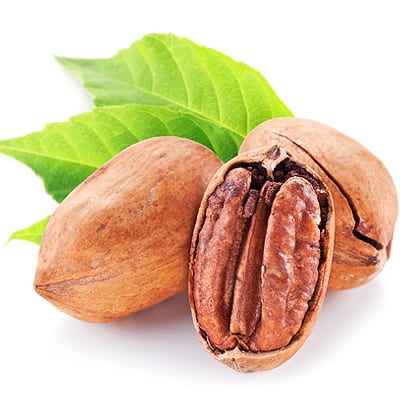
Another thing that makes them different from walnuts is that their fat is mostly MUFAs (57%). The remainder consists of polyunsaturated fatty acids (PUFAs), which contains some omega-6s.
Pecans are also much more expensive at $22-25/kg of hulled nuts. And as for their flavor, many describe it as sweet and buttery, while walnuts are more on the bitter side.
Health benefits
Like most nuts, pecans are rich in fiber, B vitamins, and essential minerals. But they’re particularly rich in magnesium and zinc, two minerals that are deficient in many diets and whose low levels can cause depression, among other things (22).
Pecans contain high levels of the antioxidant, vitamin E. Studies show that eating pecans doubles blood levels of this vitamin and that it reduced LDL cholesterol oxidation by 33%, making this a very heart healthy nut! (23).
Can you eat Pecans during keto?
Because pecans are high in fat, they’re definitely good to eat on keto. A 100g or 1 cup serving will give you only 4.4g net carbs, which is pretty impressive for a nut. Their sweet taste is also a big plus, but they are on the pricier side compared to other nuts.
Do you love candied Pecans? We too! Here’s a delicious and lightning fast guide on how to make your own low-carb candied Pecans.
#2. Brazil Nuts
Nutrition per 100g / 3.5 oz / 1 cup
Calories: 667 cal Total fat: 66.4g Protein: 14.3g
Fiber: 7.5g Net carbs: 4.8g (*)
Brazil nuts grow on trees of the same name, i.e., on Brazil nut trees.
These trees are native to South America and can grow 50 ft tall and 3-6 ft wide, which makes it one of the largest trees of the Amazonian rainforest.
Brazil nuts are also not true nuts, but considered the seeds of a fruit that takes 14 months to mature and that’s up to 6 inches wide and weighs over 4 lb.
Not surprisingly, Brazil nuts are large and oily. They’re over 66% fat, 14% protein, and less than 5% net carbs. They have a nice balance of MUFAs, PUFAs, and saturated fats. (24)
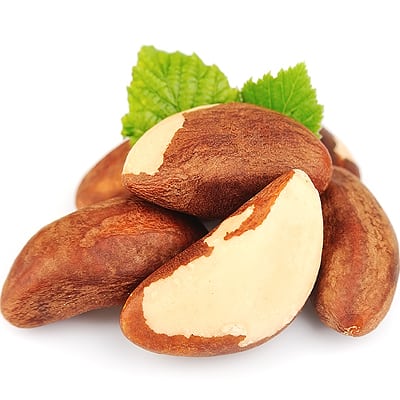
On the downside, most of their PUFAs are omega-6 fatty acids, which, although essential for health, when eaten in excess turn on the body’s pro-inflammatory pathway. Despite this, studies show that eating Brazil nuts improves blood cholesterol and inflammation. (25,26)
Health benefits
Nutritionally speaking, Brazil nuts are valued as a source of several important vitamins (e.g., thiamin and vitamin E), but they’re particularly abundant in minerals. However, in practice, you won’t get much out of Brazil nuts since 2 kernels are considered a single serving.
The only reason people are advised to stick to two Brazil nuts daily is their extraordinary selenium content, which is 95.9mg (137% DV) per one kernel. Selenium is toxic at high doses, mainly when supplemented (27).
Another problem with Brazil nuts is their price, which has been soaring for the past 2 years due to droughts. The price of Brazil nuts is now around $20-30/kg of dehulled nuts. However, they still are cheaper than macadamia and other nuts, so they could be considered a bargain considering their selenium content.
Can you eat Brazil nuts during keto?
You can and should eat Brazil nuts on keto but in moderation. These nuts are very high in selenium, which is an essential trace mineral but that is toxic when taken in excess. If you keep your intake to 2 or even a handful a day, you should be safe. Because you can only eat a tiny amount of these nuts daily, they may also not be the best snack option.
#3. Macadamia
Nutrition per 100g / 3.5 oz / 1 cup
Calories: 718 cal Total fat: 75.8g Protein: 7.9g
Fiber: 8.6g Net carbs: 5.6g (*)
Native to western parts of Australia, macadamia nuts were named after John Macadam, a Scottish-Australian chemist, and friend of botanist Ferdinand von Mueller, who first scientifically described the nut. (29)
The nut was brought to Hawaii around 1881, which is now the largest producer of macadamia nuts in the world. (29)
Macadamia nuts are truly unique in many ways. First, they are higher in fat than any other nut, being over 75% fat. This feature gives them an exceptionally rich, buttery flavor.
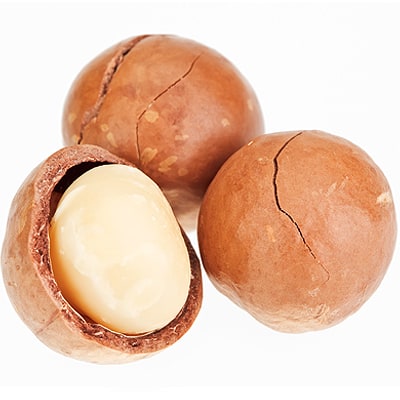
They’re low in protein and carbohydrates, which makes them a great nut to consume on a ketogenic diet. Like most nuts, most of their fat is from MUFAs, but they also provide moderate levels of saturated fats (28).And as far as nutrition goes, macadamia nuts are particularly rich in thiamin, providing 80% of its DV per 100g serving. This nutrient is important for normal energy metabolism. These nuts are also a good source of fiber and magnesium (28).
Their major setback is their price: a kg of these nuts costs around $40-54. This makes macadamia nuts the most expensive on the global nuts market.
Health benefits
An interesting thing about macadamia is that they contain a rare type of MUFA called omega-7 or palmitoleic acid. A study published in a 2018 issue of Toxicological Research found that palmitoleic acid protects the skin against oxidative stress, which, in turn, improves skin elasticity and reduces wrinkles. (30) Studies in animals also show that macadamia fats reduce inflammation and the size of fat cells. (31)
Can you eat Macadamia nuts during keto?
You can definitely enjoy macadamia nuts on keto. They’re fairly low in carbohydrates and high in healthful fats. Their creamy texture and buttery flavor go well with a range of savory and sweet meals. However, their price is a huge limiting factor.
#4 So-so Keto Nuts (Limited)
There are a couple of nuts that are good to eat on keto in moderation. While these nuts are low in carbohydrates, some of their characteristics make them impractical on a low-carb lifestyle. I’ll explain why this is so in the following lines.
#4. Walnut
Nutrition per 100g / 3.5 oz / 1 cup
Calories: 654 cal Total fat: 65.2g Protein: 15.2g
Fiber: 6.7g Net carbs: 7.0g (*)
Walnuts are probably one of the best nuts out there. They have a high-fat percentage, are relatively low in carbs, and are the least expensive nuts right after peanuts.
They provide essential fatty acids along with micronutrients that are otherwise difficult to obtain. And according to studies, they have the highest antioxidant capacity of all nuts (33).More precisely, walnuts are 65% fat, 15% protein, and 7% net carbs (34). Besides that, most of their fat is of the polyunsaturated (PUFA) kind.

Walnuts are particularly rich in omega-3 PUFAs, which are essential for human health because this is an essential fatty acid that we cannot create. Omega-3s are also difficult to obtain on a standard diet.
Walnuts also provide ample protein, fiber, and host of micronutrients such as vitamin E, folate, vitamin B6, magnesium, and phosphorous (32).
Walnuts are also more affordable than other nuts, costing around $15/ kg of dehulled product. Their only downside is that they’re quite prone to rancidification (35). Buying them in their hulls and storing them in a cool, dry place helps to prevent this.
Health benefits
As far as their health benefits go, a paper published in Critical Reviews in Food Science and Nutrition explained that walnuts contain an antioxidant compound called ellagitannin, which the body converts to ellagic acid, a powerful antioxidant and anti-inflammatory agent. Ellagic acid is known to prevent and help with dangerous diseases, like cancer. (36)
Can you eat Walnuts during keto?
Most definitely yes. Walnuts are higher in fat than many other nuts while being fairly low in net carbs. Seventy-two percent of the total fat that comprise walnuts s essential PUFAs, and they also pack a punch in vitamins, minerals, and fiber. Studies also found they are exceptionally rich in antioxidants, some of which even help prevent cancer.
But walnuts still come with 7 grams of net carbs per 100g serving, so make sure to count your carbs!
Want to take your walnut love to the next level? Try out this DELICIOUS walnut fat bomb below!
#5. Hazelnut
Nutrition per 100g / 3.5 oz / 1 cup
Calories: 628 cal Total fat: 60.7g Protein: 15.0g
Fiber: 9.7g Net carbs: 7.0g (*)
Also known as cobnut or filbert nut, the hazelnut is a popular addition to many types of confectionery and desserts.
But there’s more to these nuts than their contribution to all things sweet.
Hazelnuts are high-fat, protein-rich nuts that come with health and many other benefits.
Hazelnuts are 60% fat, most of which is composed of monounsaturated fatty acids (MUFAs). (37)
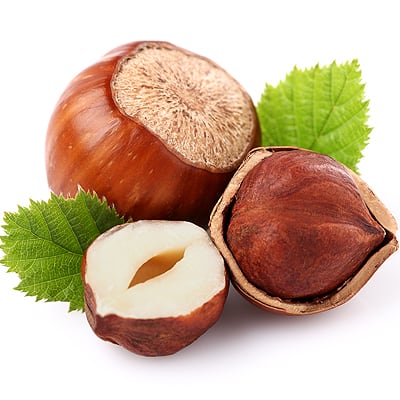
A large body of research suggests that MUFAs protect against cardiovascular diseases (CVD) by lowering levels of blood cholesterol and triglycerides, increasing LDL particle size, reducing the formation of blood clots, and enhancing whole body fat burning. (38)
Health benefits
Studies have even put hazelnuts to the test to see if their MUFAs would provide these benefits. And according to a meta-analysis of these studies published in Nutrients, hazelnuts seem to decrease LDL cholesterol and total cholesterol (39). Studies have also found that regular consumption of hazelnuts prevents deficiencies in vitamin E, which is an antioxidant vitamin that keeps your skin, heart, eyes, and brain healthy (40).Besides being a great source of heart-healthy fat, hazelnuts are rich in protein, fiber, vitamins K, B6, thiamin, iron, magnesium, phosphorous, copper, and manganese, to name a few (37). And price-wise, hazelnuts are somewhat in the middle range at $22/kg.
Can you eat Hazelnuts during keto?
You can enjoy hazelnuts on a ketogenic diet, but keep in mind that they still have 7g of net carbs per 100g. Since you’ll likely be eating less than that daily, chances are you’ll stay within your carb limit with hazelnuts.
Do you miss Nutella? No problem, we have a solution for you. Check out this delicious keto Nutella fat bomb recipe made from hazelnuts.
#6. Almond
Nutrition per 100g / 3.5 oz / 1 cup
Calories: 579 cal Total fat: 49.4g Protein: 21.2g
Fiber: 12.2g Net carbs: 9.5g (*)
Almonds are not true nuts but seeds of drupes. They come in two varieties: sweet and bitter.
The latter are mostly used in making almond extract and get their bitterness from their high levels of amygdalin, which is a naturally occuring chemical compound in the seeds of different fruits that can turn into cyanide in the body (42).
Eating too many unprocessed bitter almonds can cause cyanide poisoning. But you don’t have to worry about that since most almonds on the market are the sweet kind.
Sweet almonds have a good balance of macronutrients; they’re 50% fat, 21% protein, and 10% net carbs. The rest is mainly water and fiber (41).

Almonds are highest in MUFAs and contain very little omega-3 fatty acids. On the plus side, they’re rich in vitamin E, riboflavin, calcium, iron, magnesium, zinc, and manganese (41). Their high nutrient density has earned them the “nutritional powerhouse” moniker.
Almonds are truly versatile item in keto kitchen. You can even make your own low-carb almond flour from them. Check out the guide below.
Health benefits
And according to a large study involving 169 participants, snacking on 2oz of almonds daily leads to fat loss and improved blood lipids. (43) Researchers believe this may be due to improved blood glucose metabolism from replacing unhealthy snacks with almonds. And like most nuts, almonds are also a source of antioxidants, like Vitamin E, that protect your cells from damage, improving your overall health.
Can you eat Almonds during keto?
Almonds are in the “eat in moderation” category, which means they are pretty high in carbs when it comes to keto requirements. You can still eat them but be mindful of portion size, as 100g of almonds will come with 9.5g of net carbs.Almonds are great for keto because of their versatility and relatively low price at $1.25 per 100g at Costco. Many keto-friendly products are made from almonds such as almond flour, almond butter, and almond milk. They may not be the lowest in carb content, but they certainly help boost your nutrition and health and make the diet more do-able.
#7. Pine Nuts
Nutrition per 100g / 3.5 oz / 1 cup
Calories: 673 cal Total fat: 68.4g Protein: 13.7g
Fiber: 3.7g Net carbs: 10.0g (*)
Also called pinole, pine nuts are the edible seeds of several species of pines. They have been eaten in Europe and parts of Asia since Paleolithic times.
Today, they’re mostly used to garnish and flavor meat and vegetable-based dishes. They’re also used in bread recipes, but probably their best-known use is in making Italian basil pesto sauce.
Pine nuts are 68% fat, 14% protein, and 13% carbohydrates. The rest is mainly water and fiber. Their high-fat content means they deliver plenty of calories, around 670 per 100g serving (44).
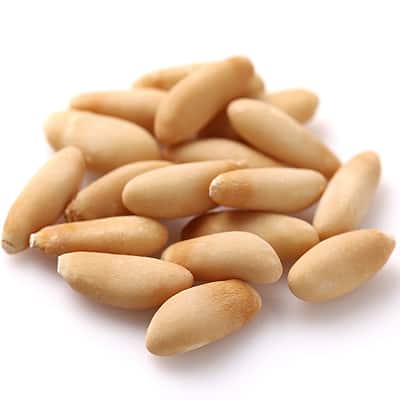
Another thing to note is that most of this fat is made up of PUFAs and a smaller comprises MUFAs. This same serving size of pine nuts delivers at least 20% of our daily needs for of Vitamin E, Vitamin K, Magnesium, Zinc, and Manganese. On the downside, it also provides 10g of net carbs, which is a lot for keto (44).
What makes pine nuts stand out is that they come from pine cones instead of drupes and dry fruit. And their flavor definitely gives away their origin; it’s often described as resinous, but also sweet and buttery. All in all, pine nuts taste like nothing you’ve tried before. Their high-fat content also makes them incredibly tender.
Health benefits
Pine nuts also seem to provide unique health benefits. One animal study, for example, found that oil in pine nuts increases muscle cell metabolism and brown adipose tissue, suggesting pine nuts can help with weight management. (45). A big disadvantage of pine nuts, however, is their hefty price tag of $40/kg.
Can you eat Pine nuts during keto?
You can definitely enjoy a few pine nuts when on a keto diet. These nuts are high in essential fats and provide a range of important micronutrients. Unfortunately, they’re also relatively high in carbs at 10g of net carbs per 100g serving, and their price will also make you think twice before buying them. The best way to eat these flavorful nuts on keto is sparingly in recipes that call for them as a flavoring.
#4 High-carb Nuts (Avoid)
While most nuts are high-fat and low-carb, a rare bunch has a nutritional profile that is not suitable for those on a keto diet.
These high-carb nuts can easily kick you out of ketosis, especially if you’re a keto beginner.
However, if you’re keto-adapted or follow a cyclical or targeted ketogenic diet, then you may include these carby nuts here and there.
#8. Peanut
Nutrition per 100g / 3.5 oz / 1 cup
Calories: 567 cal Total fat: 49.7g Protein: 23.7g
Fiber: 8.0g Net carbs: 13.5g (*)
Peanuts are actually legumes, just like soybeans, chickpeas, lentils, and black-eyed peas.
However, from a culinary standpoint, they’re categorized as nuts because their nutrient profile is similar to that of most nuts and they’re consumed just like nuts.
Most people eat roasted and salted peanuts or in the form of peanut butter.
Peanuts are around 50% fat, 24% protein, and 13.5% net carbs. While that may seem keto-friendly at first, keep in mind that a 100g serving contains over 13g net carbs (46).
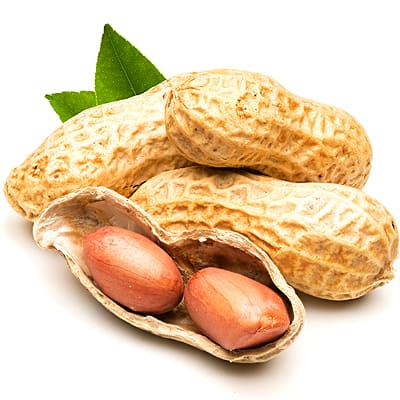
And given how addictive peanuts can be, it’s easy to go over your daily carb limit with these nuts.
On the plus side, peanuts are a fairly good source of protein, unsaturated fats, and their carbs are complex, all of which makes them good for health. Researchers state that peanuts contain all the essential amino acids in varying proportions, and their protein quality is as good as that of meat and eggs. (47)
However, peanuts are low in lysine, methionine, and threonine, which are essential amino acids. They are also a known cause of protein allergies. (47)
Health benefits
Other nutrients peanuts are rich in include Vitamin E, Thiamin, Niacin, Folate, Magnesium, Zinc, and Potassium. They also provide a moderate amount of fiber, both soluble and insoluble, which is great for gut health (46). Peanuts are rich in an antioxidant compound called resveratrol, which is also abundant in red wine. This compound is known to fight cancer, neurodegenerative diseases, and inflammation (47).
Can you eat Peanuts during keto?
I suggest avoiding whole peanuts on keto. A small serving of, say 50g or ½ cup, will give you almost 7g net carbs. A better way to consume peanuts on keto is as keto friendly nut butter. Two tablespoons of sugar-free nut butter will give you around 4g net carbs and 8g protein – a fairly decent macro ratio that will help keep you full.
Peanuts are still high in carbs, so they do not play well with the keto diet. We suggest choosing keto friendly nuts like Pecan, Brazil, Macadamia nuts or 100% guilt free nut butter.
#9. Pistachio
Nutrition per 100g / 3.5 oz / 1 cup
Calories: 560 cal Total fat: 46.0g Protein: 21.3g
Fiber: 10.3g Net carbs: 17.4g (*)
Pistachios are native to the Middle East and Central Asia, where they have been consumed for thousands of years.
In fact, this ancient nut is one of the two only nuts mentioned in the Bible, the other ones being almonds. (50)
Pistachios are members of the cashew family and even resemble them nutritionally.
Pistachios are 46% fat, 21% protein, and 17% carbohydrates. Almost half of the net carb content comes from naturally occurring sugar. Their fat content comprises largely MUFAs and PUFAs to a smaller extent (49, 51).

Pistachios are considered nutrient-dense food, providing significant amounts of protein, fiber, B vitamins, fat-soluble vitamins, and all essential minerals. They’re unfortunately also high in carbohydrates. (51)
A 100g serving of dehulled pistachios will give you a whopping 17.4g net carbs. Even if you half your serving size, you’ll end up with 8.7g net carbs (49). This doesn’t mean you can’t eat pistachios on a keto diet. You’ll just have to limit your portion to 1oz daily and, preferably, use them to garnish and flavor meals. Another major setback of pistachio nuts is their high price at $26/kg of shelled nuts.
Health benefits
The benefits you may get from eating pistachios include a lower risk of CVD and diabetes, improved gut health due to fiber and antioxidants, lower risk of neurodegenerative diseases thanks to their vitamin E content, and a lower risk of cancer. (52)
Can you eat Pistachios during keto?
You may eat pistachios moderately on keto, keeping your daily serving to less than a handful a day if unshelled. But given their carb content, it’s best to avoid them. Pistachios are usually sold roasted and salted, which makes them particularly addictive. However, if you garnish your meals with them, instead of eating them as a snack, you may be able to control your pistachio portions.
Pistachios are still high in carbs, so they do not play well with the keto diet. We suggest choosing keto friendly nuts like Pecan, Brazil, Macadamia nuts or 100% guilt free nut butter.
#10. Cashew
Nutrition per 100g / 3.5 oz / 1 cup
Calories: 553 cal Total fat: 43.8g Protein: 18.2g Fiber: 3.3g Net carbs: 29.4g (*)
One of the more unusual nuts is the cashew nut produced by a tropical evergreen tree native to Brazil.
The cashew tree is known to grow as high as 35ft and produces the cashew apple, which is also eaten as fruit (54).
The cashew nut is a seed that grows from a drupe at the end of the cashew apple. The seed’s shell contains anacardic acid, a toxin similar to that found in poison ivy. (55)
Cashew nuts, also simply called cashews, are eaten in a host of different ways: on their own, as cashew nut butter, as a thickening ingredient, and as vegan cheese made out of cashews.
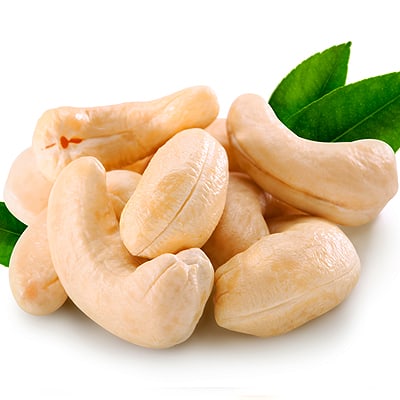
Cashews are also used for making cashew oil. This edible oil is often used in skin care.
Nutrition wise, cashews are high in all macronutrients. These nuts are 30% carbohydrates, 44% fat, and 18% protein (53). Their high carb content means they are not the best option on keto.
However, some keto-ers still use them in certain recipes. Besides being high in all three macros, cashews are a good source of the B-complex Vitamins, but are higher in several minerals, including Iron, Magnesium, Zinc, and Selenium (53).
Health benefits
Studies on cashews show these nuts increase HDL cholesterol and reduce blood pressure in people with type 2 diabetes. (56)
Can you eat Cashews during keto?
It’s best to avoid cashews on a ketogenic diet since a small, 100g serving contains as much as 29.4g net carbs. However, if you plan to use cashews sparingly, then feel free to use them. But bear in mind that even 1 oz provides almost 8g of net carbs.They’re good in thickening sauces and vegan cheese.
Cashews are still high in carbs, so they do not pair well with the keto diet. We suggest choosing keto friendly nuts like Pecan, Brazil, Macadamia nuts or 100% guilt free nut butter.
#11. Chinese Chestnut
Nutrition per 100g / 3.5 oz / 1 cup
Calories: 224 cal Total fat: 2.2g Protein: 3.1g
Fiber: 5.1g Net carbs: 48.0g (*)
Chestnuts are native to temperate regions of America, Europe, China, and Japan.
They bear a strong resemblance to horse chestnuts and water chestnuts physically, but these three groups are not in any way related.
Horse chestnuts are mildly poisonous, and water chestnuts are root vegetables.
Chestnuts are, all in all, very healthy, but they’re one of the worst offenders where keto is concerned. Unlike most nuts, which are high in fat and protein, chestnuts are high in carbohydrates and low in fat and protein. (57)
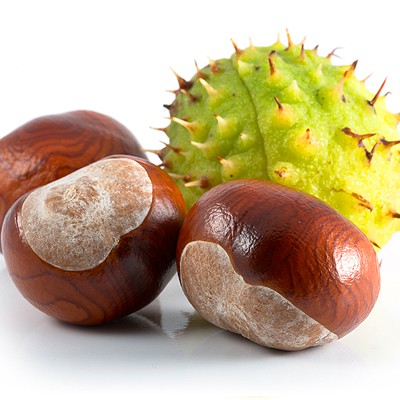
In fact, their carbohydrate content is comparable with that of wheat (58). Most of their carbs are in the form of starch, but chestnuts also contain simple sugars and fermentable fibers.Besides being high in starches and sugar, chestnuts are high in vitamin C, which is unique among nuts. A 100g serving of roasted chestnuts will give you around 26mg (43%DV) of Vitamin C. These starchy nuts are also a good source of Vitamin B6, Folate, Potassium, Copper, and Manganese. (57)
Health benefits
As far as health benefits go, chestnuts are considered a satiating snack because they contain slowly digestible starches and fiber. Both of these nutrients lead to slower digestion and a gradual rise in blood glucose, which helps curb hunger. (58) Research shows that roasting chestnuts removes their anti-nutrients and may even boost their antioxidant capacity. (59)
Can you eat Chestnuts during keto?
Generally, no. Chestnuts are simply too high in carbs, and one 100g serving will put you at your daily carb limit. However, if you follow a cyclical or relaxed targeted approach, you can eat chestnuts as long as you’re avoiding them during your low-carb days.
Chestnuts are still high in carbs, so they do not play well with the keto diet. We suggest choosing keto friendly nuts like Pecan, Brazil, Macadamia nuts or 100% guilt free nut butter.
#5 Best Keto Seeds (Approved)
Seeds should definitely be part of your keto journey. Most are high in healthy fats and low in carbohydrates. And all are much more affordable than nuts. However, seeds also differ in their nutritional value, so knowing which seeds and how much of them you should eat is important.
The way you eat seeds can make a huge difference on your nutrition and diet because their digestibility and nutritional value vary depending on the preparation method as well. With that said, below are a couple of popular choices to add to your keto meals.
#12. Sesame seed
Nutrition per 100g
Calories: 573 cal Total fat: 49.67g Protein: 17.73g
Fiber: 11.8g Net carbs: 11.65g (*)
Sesame seeds are about 44-60% oil. They have been grown for over 5,000 years, making them one of the oldest oilseed crops in the world. (61)
Wild sesame seeds are native to Africa, but its cultivated type originated in India.
You will find sesame seeds sold in many colors, but the most widely available type is off-white.
Most sesame seeds you find in stores have been dehulled.
Hulled sesame seeds contain barely any net carbs and are exceptionally high in fat at 61% per total weight. (60)
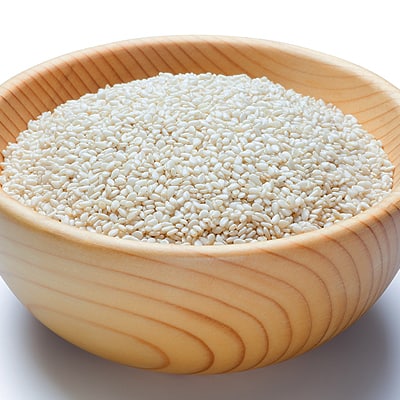
Their fat is composed of an almost equal amount of MUFAs and omega-6 PUFAs. These tiny seeds are also a great source of protein, providing 17g in a 100g serving. (60)
And as far as vitamins and minerals go, sesame seeds are rich in B Vitamins, Iron, Magnesium, Phosphorous, Copper, and Selenium.
Eating sesame seeds and sesame seed products may help reduce your risk of stroke, heart attack, and pulmonary embolism since these seeds seem to reduce the formation of blood clots. (62) Their antioxidants were also found to help with inflammation in people with knee osteoarthritis. (63)
Can you eat Sesame seed during keto?
Sesame seeds are allowed during keto but watch the amount. 100 grams of Sesame seed comes over 11 grams of net carbs. They’re rich in healthful fats and powerful antioxidants that can contribute to your overall health.
How to eat them?
- Sesame seeds are quite versatile. You can sprinkle them over yogurt, smoothies, salads, keto bread, and Asian stir-fries.
- Toasting sesame seeds help bring out their flavor.
- If you buy dehulled seeds, there’s no need to grind them to make them more digestible.
- Another way to consume sesame is as tahini, which is sesame seed paste popularly used in hummus.
#13. Flaxseed
Nutrition per 100g
Calories: 534cal Total fat: 42.16g Protein: 18.29g
Fiber: 27.3g Net carbs: 1.58g (*)
Also known as flax or linseed, flax is both a food and textile crop. The flax plant grows to around 3 ft tall in cooler regions across the globe. (65)
Surprisingly, though, flax is believed to be native to Egypt. Textile made from flax is known as linen, while oil made from the plant is known as linseed oil. However, its seeds are also widely sold and worth adding to your keto diet. (65)
Flaxseeds are namely 42% fat, 18% protein, and 1.6% net carbs. (64) This is a great macronutrient profile for those following keto. That being said, those who are following keto with a protein restriction do need to be careful with the amount eaten.

What’s even better is that your average 2 tablespoon serving of flax seeds provides 7.6g fiber, which is 31% of the DV for this nutrient.
However, where flax really stands out is in its rich omega-3 fatty acid content. Two tablespoons of flaxseeds contain 6,388 mg of this essential, anti-inflammatory fatty acid that you need for optimal cardiovascular health and to maintain normal brain functioning. (66)
However, flax contains a form of omega-3 fatty acid called α-Linolenic Acid (ALA) that does not convert well to docosahexaenoic acid (DHA), the major omega-3 in the brain. (67)
Flax also contains more lignans than any other food. Lignans act as antioxidants and phytoestrogens, which were found to be helpful in preventing estrogen-dependent cancers like breast, uterine, and prostate cancers. (68)
Can you eat Flaxseeds during keto?
Definitely yes. Flaxseeds are high in fiber and low in carbs. They’re rich in heart-healthy omega-3 fats that may potentially contribute to your daily DHA levels.
How to eat them?
- The best way to consume flaxseeds are ground into a meal.
- Flaxseeds have a hard shell that’s resistant to digestion. In order to get any nutritional value from flax, grounding them is an absolute must.
- Freshly ground flaxseeds are also better than store-bought flax meal because there’s a lower risk of rancidity.
- You can also use flax in the form of flaxseed oil to reap the health benefits it provides
#14. Chia seed
Nutrition per 100g
Calories: 486 cal Total fat: 30.74g Protein: 16.54g
Fiber: 34.4g Net carbs: 7.72g (*)
These seeds may be tiny, but they’re bursting with nutrition. Native to Central America, chia seeds come from a flowering plant of the mint family. (70)
They’re best known as being the richest source of plant omega-3s and for their gel-forming properties when mixed with liquids. (66)
They’ve become increasingly popular over the past decade.
Chia seeds are 31% fat, 16% protein, and 6% net carbs. They’re exceptionally rich in fiber, with 1 oz serving providing 10.6g or 42% Daily Value for this nutrient.
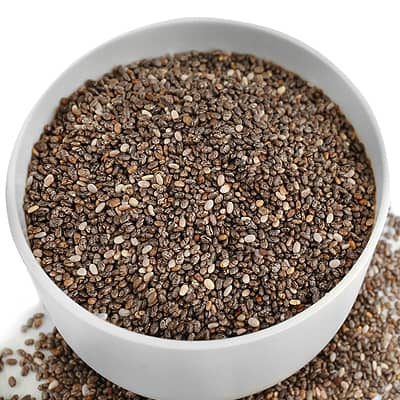
Most of their fiber is of the soluble kind, which helps lower bad cholesterol and blood sugar levels. Like in flax, most of the fat found in chia is omega-3 fatty acids (ALA), and they are among the richest plant sources of this nutrient, right after flax. (66)
Like most seeds, chia is also rich in several of the B vitamins, notably Thiamin,iacin, and Folate. They’re also a good source of minerals such as Calcium, Iron, Magnesium, Manganese, and Zinc. (69) Unlike flax, chia does not need to be ground to provide these nutrients. Once dissolved in water, these seeds are easily broken down in the digestive system.
Studies on the health benefits of chia did not bring about any strong evidence. According to a recent systematic review and meta-analysis published in Nutrition Reviews, most studies examining chia seeds were of low quality, so there’s no strong evidence to support any health claims. (70) There are several studies supporting optimal intake of omega-3 fatty acids and increasing one’s cardiovascular, cognitive health, decreasing age related macular degeneration, and cancer. (66)
Can you eat Chia seed during keto?
Chia is great for keto. They’re low in carbs and high in fat. They also provide a moderate dose of protein, which can help you stay feeling full. It is best to eat no more than 3 tbsp per day due to their binding nature in the gut.
How to eat them?
- Chia seeds can be eaten soaked or dry.
- You can sprinkle them over yogurt, smoothies, salads, and use them in baking.
- Some also like to make chia pudding by soaking them in almond milk, coconut milk, or yogurt. However, not everyone appreciates the texture of soaked chia.
#15. Sunflower seed
Nutrition per 100g
Calories: 584 cal Total fat: 51.46g Protein: 20.78g
Fiber: 8.6g Net carbs: 11.4g (*)
Sunflower seeds come from sunflowers – those tall flowers with a big flower head with bright yellow petals.
There are many different species of sunflowers that produce several different sunflower seeds. One type is grown for the seeds, and the other is grown mainly to produce sunflower oil. (72)
However, the most commonly sold variety is linoleic and is the one from which most sunflower oil is made. (72)Sunflower seeds are comprised of 50% fat, 21% protein, and 11% net carbs. They are exceptionally rich in the antioxidant Vitamin E, providing 166% of its Daily Value in a 100g serving. (71)

Besides that, they’re a very good source of Thiamin, Magnesium, Folate, fiber, Potassium and Zinc. (71)The biggest downside of sunflower seeds, particularly the linoleic type, is that it’s pretty high in omega-6 fatty acids. Studies found that a higher intake of these fatty acids causes the pro-inflammatory pathway to turn on. To counteract this problem, a lot of people are switching to high oleic sunflower seeds and their oil. (73,74)
Can you eat Sunflower seed during keto?
You can eat sunflower seeds on a low-carb diet as long as you watch your portions. These seeds are high in fat but are also moderately high in carbs from a keto standpoint. It’s also a good idea to go for high oleic sunflower seeds to balance out your omega-3 to omega-6 intake. If you are following strict keto, stick to 1 cup of hulled seeds, as these provide only 5g of net carbs per serving.
How to eat them?
- Go for high oleic sunflower seeds if you can find them.
- Add these seeds to baked goods or snack on them, making sure to keep your intake to around 1 oz per day.
- Sunflower seeds are best in savory meals like fried chicken, salads, and keto pasta.
#16. Pumpkin seeds (Pepitas)
Nutrition per 100g
Calories: 559 cal Total fat: 49.05g Protein: 30.23g
Fiber: 6g Net carbs: 4.71g (*)
Also known as pepitas, pumpkin seeds are one of those addictive snacks you need to be careful with.
These oval and flat seeds come from several pumpkins or squash cultivars and are sold roasted in their hulls or dehulled.
They’re also used in making a particularly delicious and fragrant salad oil.
Pumpkin seeds have a high nutritional value since they’re 50% fat, 30% protein, and 14% carbohydrates. They provide moderate amounts of Niacin,, Vitamin K, and folate. (75)

However, they’re a fairly good source of Iron, Magnesium, Manganese, Potassium, Phosphorus, Copper and Zinc. The fat found in pumpkin seeds is predominantly comprised of PUFAs and MUFAs. (75)The biggest benefit of eating pumpkin seeds is that you will get plenty of satiating protein from these kernels. If you go for the salted and roasted kind, you also get the added benefit of increasing your sodium intake, which can be helpful when you’re battling keto flu. Pumpkin seeds may help with reducing blood glucose (76, 77).
Can you eat Pumpkin seed during keto?
You can eat pumpkin seeds on keto, but you need to watch your intake. These seeds are quite low in carbohydrates at 4.71g of net carbs per 100g serving. If you want to enjoy pumpkin seed flavor without the carbs, consider using pumpkin seed oil.
How to eat them?
- Pumpkin seeds can be eaten in their hulls or dehulled.
- Whole pumpkin seeds are tasty as a snack but can put you at risk of overindulging if you don’t measure your portions.
- Hulled pumpkin seeds are best over salads, breads, and desserts.
- You can also crush pumpkin seeds and add them to smoothies and baked goods.
How to Get “Nut-gasm”
on Keto
If you only eat nuts and seeds as snacks on a keto diet, chances are you’ll get bored of them soon enough. And that would be a shame considering how much they can contribute to a keto diet in terms of nutrition and convenience.
That’s why it’s important to be a bit creative with these foods. If you need some inspiration, then consider these tips.
#1. Keto granola
Forget store-bought granola breakfasts since these are too high in carbs to be work while on keto. Instead, make your own by chopping up and mixing different nuts and seeds to mix with almond flour, coconut flour, cinnamon, dried berries if they’re allowed on your plan, and sugar-free maple syrup.
Of course, there are many recipes for keto granola online that can help you create a granola that best suits your taste and preferences.
#2. No-bake cookies and fat bombs
These snacks take only a couple of minutes to make. They can help you curb hunger pangs and are also great for boosting your fat intake when first beginning a keto diet. Most keto-friendly cookies and fat bombs call for a combination of butter and ground nuts. As with granola, you can find plenty of inspiration for making these snacks on the Internet.
Here’s a delicious no-bake cookie recipe. Make sure to use keto-friendly nuts (Pecan, Brazil, Macadamia).
#3. Nut-based products
Keto dieters rely on nut-based substitutes for a wide range of kitchen staples. For example, almond and coconut milk are used to replace dairy milk, while almond butter and macadamia nut butter are great for making smoothies. And, of course, almond and coconut flour are indispensable baking ingredients in a keto dieter’s kitchen. Then, we also have sesame seed paste (tahini), sunflower seed butter, and even pumpkin seed paste.
#4. Homemade nut products
And while it’s definitely more convenient to buy ready-made nut everything, it can be more affordable to make nut-based products at home. A good example would be coconut milk, which is much cheaper to make at home than to buy the expensive canned stuff or highly diluted carton coconut milk. Same applies to nut butters and flours, which you can easily make at home with a food processor.
#5. Crunchy toppings
Crushed nuts are perfect as a breadcrumb substitute for things like fried chicken and gratins. Nuts that are best for this particular purpose are almonds, macadamia nuts, and pecans. These crunchy toppings also work well in dessert recipes that call for a streusel topping.
#6. Meal toppings
Add your favorite nuts, seeds, and nut butters to your breakfast and salads. You can also sprinkle, say, pumpkin seeds over fried chicken. Also, consider adding toasted sesame seeds over vinaigrette salads. Seeds also go well with keto ice cream and yougrt. The choices are essentially endless.
Conclusion
There’s likely no other food group that’s as versatile and keto friendly as nuts and seeds. Most are high in fat and low in carbs. But there’s more to these foods than their keto-friendly macros ratio.
Nuts and seeds are also nutrient dense, an important source of fiber, contain mostly healthy fats, and their many antioxidants, vitamins and minerals all contribute to good health.
Besides that, nut-based products are an indispensable part of keto cuisines. These products help create a wide range of meals that would otherwise be impossible on a keto diet.
And as you will see, nuts and seeds are more than just a snack option. They’re a central ingredient that will add flavor, nutrition, and healthfulness to your keto diet.
Over to You
Are nuts part of your keto regimen?
What are your favorite ways of incorporating nuts into your diet?
Have any other comments regarding this nut guide?
Please let me know in the comment section!

Alex is the founder of Bodyketosis, an author, low-carb enthusiast, and a recovering chubby guy who reclaimed his health using the ketogenic lifestyle. The need for the keto life began after his aunt and cousin were diagnosed with type 2 diabetes and he was next in line. Through personal experience and extensive scientific research, Alex offers insightful tips for everything keto.



![Can You Eat Cheese on Keto Diet? [The Cheesy Guide]](https://bodyketosis.com/wp-content/uploads/2019/05/keto-cheese-guide-768x457.jpg)

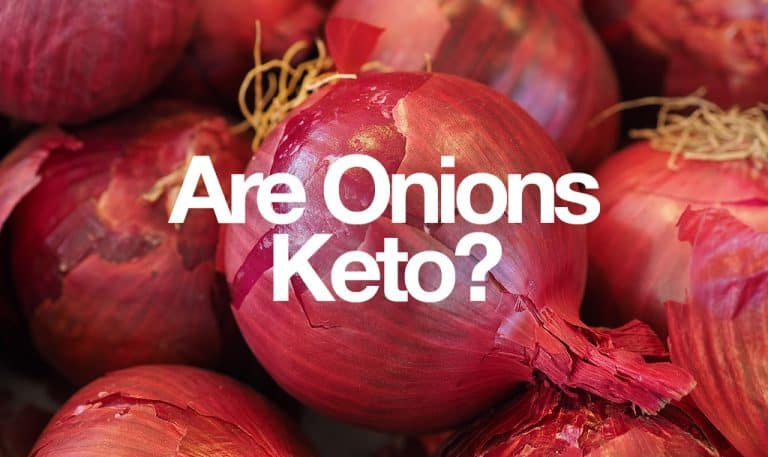

![Best Keto-Friendly Coconut Oil [for Fat Loss, Coffee & Skin]](https://bodyketosis.com/wp-content/uploads/2019/05/best-keto-coconut-oil-768x457.jpg)